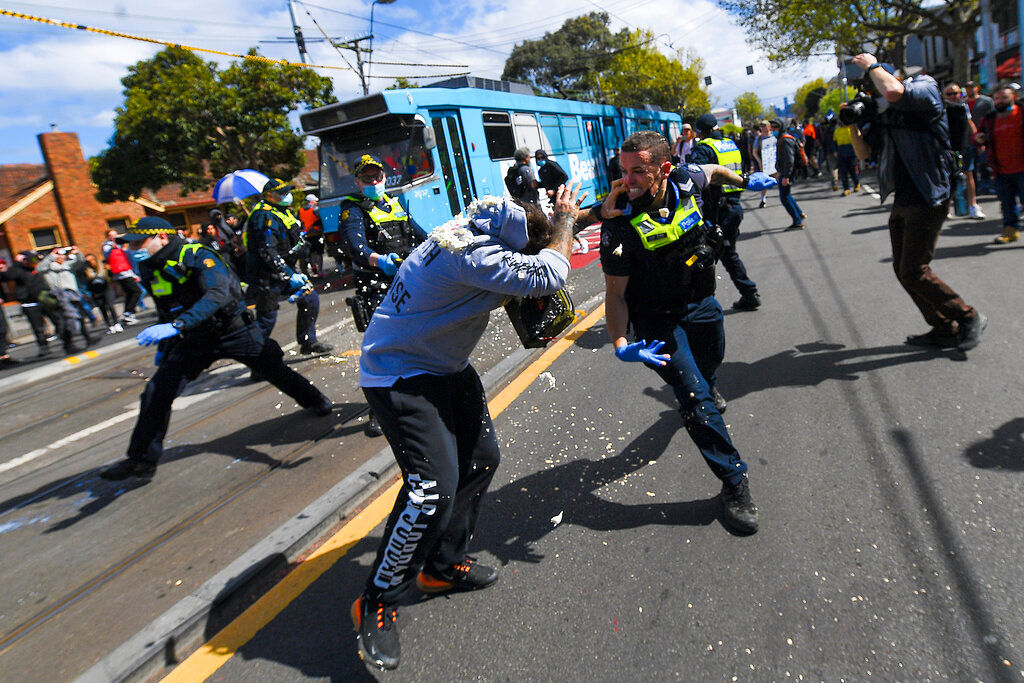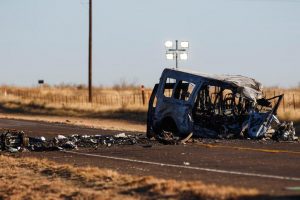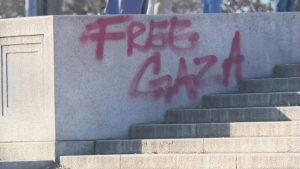Police in Australia have charged more than 250 people for breaching COVID-19 restrictions and other offences during anti-lockdown rallies. In Melbourne, Victoria, 235 people were arrested after 10 officers were injured as protesters hurled bottles and stones at police, according to a media report. The police used capsicum spray and resorted to baton charge to disperse the protesters. At least 32 people were arrested in New South Wales (NSW) as protesters rallied in Byron Bay and Sydney, Australian Associated Press reported. Protests also erupted in Brisbane and on the Gold Coast despite no lockdown measures in Queensland.
Victoria Police Commander Mark Galliott said 2,000 police officers were deployed in the Melbourne central business district, where about 500 to 700 protesters had assembled.
Police arrest two anti-lockdown leaders across Australia, New Zealand
Galliott slammed the group of protesters comprising “angry, aggressive young males”, who he said had taken to the streets with the intention of having “a fight with the police.”
“It’s incredibly frustrating, but more than that, it really saddens me to see people acting in that way towards police,” Galliott told reporters.
He also said that the number of protesters in Melbourne could have been in thousands if preventative measures had not been taken to close public transport system and enforce vehicle checkpoints. Earlier this month, Victoria extended its COVID-19 lockdown by another three weeks due to surge in daily new coronavirus cases with Premier Daniel Andrews saying the restrictions will be relaxed only after 70% of eligible residents receive their first dose of COVID-19 vaccine on or around the expected date of September 23. Australia received its first shipment of Moderna COVID-19 vaccine on Saturday.
As of now, 56% of Australians aged 16 and above have received their first dose.
NSW and Victoria on Saturday reported more than 1800 new coronavirus cases on Saturday.
But despite recent outbreaks, Australia’s overall tally of 84,000 confirmed cases and over 1,100 deaths are still comparatively lower.







